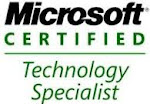In SharePoint search, we can map crawled properties with
managed properties. We can map the properties by using the steps below,
Navigate to Site settings page in SharePoint site collection
and click on Search schema in Site collection Administration section.
In Site Collection Administration – Managed Properties page,
enter the Managed property name in Managed property text box to search. Select the property, click on Edit/Map property option.
In Edit Managed Property page, “Mappings to crawled properties” section, select “Include Content from all crawled properties” option and click on “Add a Mapping” button.
In crawled property section dialog box, Search for a crawled property name field, enter the property name and click on “Find” button to search for the property.
We can the properties in “Select a crawled property” box. Select the properties and click on OK to save the settings.

























